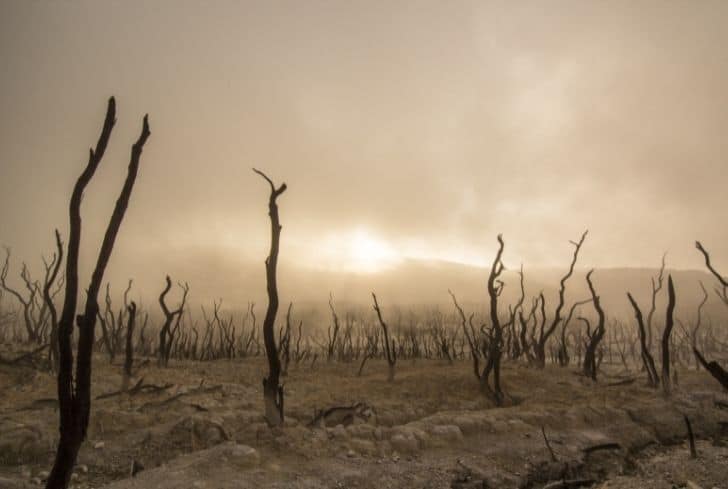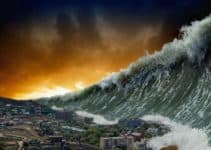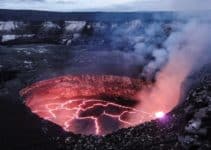The National Oceanic and Atmospheric Administration (NOAA) reports that the ten warmest years on record have all occurred since 2005, with seven of the ten having occurred since 2014.
This is the general phenomenon known as global warming and is a catastrophic effect of the damage happening to the atmosphere and environment.
One of the consequences of global warming is droughts. Droughts have been a persistent issue for millennia, but with the current trends of global warming and climatic change, we expect this problem to only exacerbate, which could attract more calamity.
This article looks into droughts, their causes, effects, and potential solutions.
What is a Drought?
The United States Geological Survey (USGS) defines drought as a period of drier-than-normal conditions that results in water-related problems. The condition is characterized by a lack of precipitation, such as rain, snow, or sleet, for a protracted period, resulting in a water shortage.
When there’s drought, the average precipitation is low even if the amount of precipitation at a particular location varies from year to year. Consequently, plants die, stream flow declines, water levels in lakes and reservoirs fall, and the depth of water in wells increases.
When such dry weather persists and water supply problems develop, the dry period becomes a drought; the world’s leading natural disaster.
Unlike most other natural disasters that announce their arrival and cause immediate destruction, droughts are a silent threat. They creep in unnoticed and can easily be mistaken for a harmless dry spell.
They will then build over time, eventually causing devastating destruction that matches – and sometimes exceeds – that of any other extreme weather occurrence.
In fact, statistics show that even though droughts only represent 15% of natural disasters, they took the largest human toll, killing about 650,000 people between 1970 and 2019.
What makes droughts more devastating is that they don’t leave immediately. Instead, they will linger for months or even years, affecting more and more people during this time.
But then, unlike other natural disasters, droughts can be occasioned by human activity. Well, they can still occur naturally, but human activity, such as water use and management, can aggravate dry conditions.
Types of Drought
Droughts are categorized according to how they develop and what types of impact they have.
According to NOOA, there are five types of droughts;
- Meteorological
- Hydrological
- Agricultural
- Socioeconomic
- Ecological
Meteorological droughts are when the degree or duration of dryness exceeds what’s typical for an area. That means this type of drought is region-specific, so what would be considered a drought for one region may not hold true for another.
Hydrological droughts occur when a lack of rainfall persists long enough to cause surface water like rivers, reservoirs, streams, or groundwater supplies to fall below a locally significant threshold and sometimes even deplete.
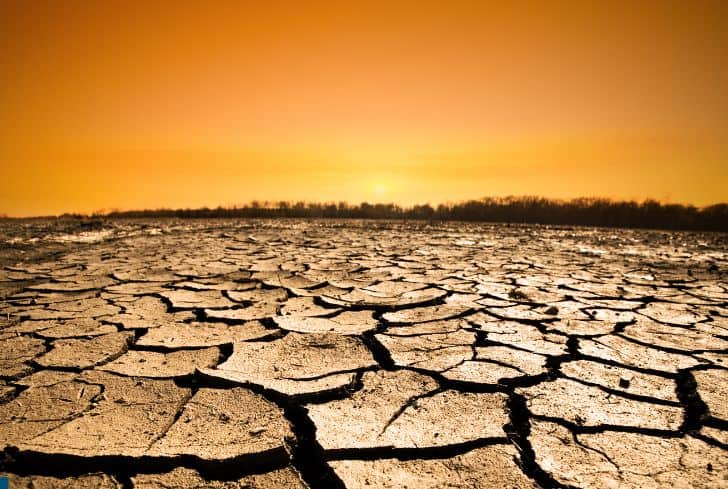
Agricultural droughts are occasioned by agricultural tendencies when available water supplies cannot meet the needs of crops or livestock at a particular time. This drought can stem from meteorological droughts, reduced access to water supplies, or simply poor timing.
For example, when snowmelt occurs before runoff is most needed to hydrate crops.
Socioeconomic drought takes a comprehensive approach to consider the detrimental effects of drought on the economic and social welfare of a community or region. This extends beyond just water scarcity to encompass critical areas, including agricultural output, employment opportunities, income, public health, and the overall well-being of life.
Ecological drought is where water scarcity negatively affects ecosystems, causing disruptions in their natural functions and processes. This results in a loss of biodiversity and habitat, heightened vulnerability to wildfires, and imbalances in ecological interactions. The overall health and capacity of the environment are significantly affected
Various Causes of Drought
1. Natural causes
Some droughts have occurred naturally, plaguing humankind throughout much of our history. Until recently, naturally occurring droughts were often natural phenomena triggered by cyclical weather patterns, such as the amount of moisture and heat in the air, land, and sea.
2. Altered weather patterns
The distribution of rainfall can also be affected by how air circulates through the atmosphere. When there is an anomaly in surface temperatures, particularly over the sea, air circulation patterns are altered.
This changes how and where precipitation falls around the world, and the new weather patterns will most likely throw water supply and demand out of sync, as is the case when earlier-than-usual snowmelt reduces the amount of water available for crops in the summer.
3. Excess water demands
Drought can also result from an imbalance in water supply and demand. As the global human population continues to balloon and intensive agricultural practices continue to be employed, more water is required to sustain the human race and agricultural practices.
This continues to tip the scales, making droughts a reality with each passing day. A study estimated that between 1960 and 2010, the human consumption of water increased the frequency of drought in North America by 25%.
The situation is worsened by dwindling rainfalls, forcing people to pump more water from rivers, aquifers, and reservoirs. Doing this depletes valuable water resources that could take years to replenish and could permanently impact future water availability.
At the same time, the demand for water supplied by upstream lakes and rivers, particularly in the form of irrigation and hydroelectric dams, leads to the diminishing or drying out of downstream water sources, further contributing to droughts in other regions.
4. Deforestation and soil degradation
Trees and plants are essential as they release moisture into the atmosphere, resulting in clouds forming and rainfall falling, returning the moisture to the ground. Unfortunately, the human race is the best at destroying these natural resources.
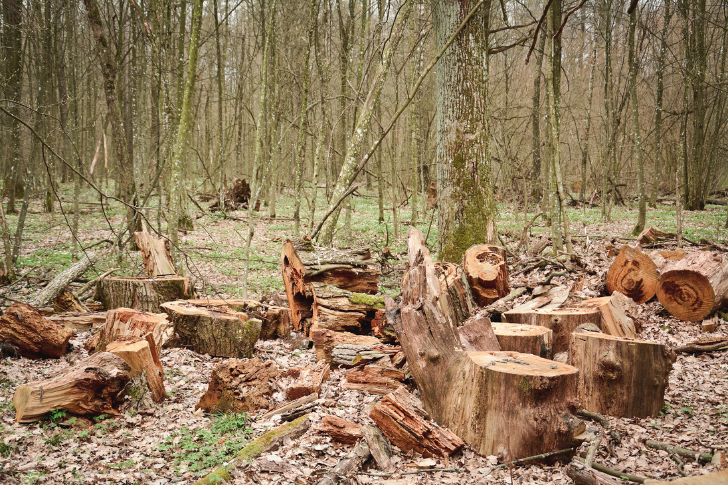
When forests and vegetation disappear, less water is available to feed the water cycle, making entire regions more vulnerable to drought. Meanwhile, deforestation and other poor land-use practices, like intensive farming, continue to diminish soil quality and reduce the land’s ability to absorb and retain water.
As a result, soil dries out faster, inducing agricultural droughts, and less groundwater is replenished, contributing to hydrological drought.
5. Global warming
As the name suggests, the planet is warming at alarming rates and could cause droughts. Global warming is mainly associated with human activity, such as releasing greenhouse gases which cause a trapping effect, prompting the global temperatures to rise.
With increased temperatures, water from rivers, streams, lakes, and other water bodies continue to evaporate. Coupled with other factors, this can lead to decreased rainfall and ultimately result in drought conditions.
6. Climate change
Rising temperatures have the effect of making wet regions wetter and dry regions drier. For wetter regions, warm air will absorb more water, leading to larger rain events, while in more arid regions, warmer temperatures mean water evaporates more quickly.
Climate change also alters large-scale atmospheric circulation patterns, causing a shift in storm tracks off their typical paths. This, in turn, magnifies weather extremes, which is one reason why climate models predict the already parched U.S. Southwest and the Mediterranean will continue to get drier.
7. Fluctuating ocean and land temperatures
Global weather patterns, including dry and wet conditions on land, are determined mainly by ocean temperatures, and even minor temperature changes can have profound consequences on climate systems.
According to research, extreme weather patterns on land, such as protracted droughts in North America and the eastern Mediterranean correspond directly to dramatic and prolonged temperature changes in the North Pacific and North Atlantic oceans.
Disastrous Effects of Drought
1. Hunger and famine
Droughts cause a shortage of water necessary for growing food crops, either through natural rainfall or irrigation from water reserves. This shortage undermines or destroys the food supply, leading to hunger and, in severe cases, famine.
The best example is the 1984 famine in Ethiopia, which resulted from a deadly combination of a severe drought and a dangerously ineffective government, leading to hundreds of thousands dying.
2. Insufficient drinking water
Droughts create water scarcity and endanger individuals with insufficient water to drink or use. The fundamental need for water to sustain life forces individuals to seek untreated sources, potentially causing sickness.
The absence of clean water furthermore produces unsanitary public facilities and poor personal hygiene, leading to a broad spectrum of life-threatening diseases.
Tragically, millions each year fall ill or succumb because of poor water accessibility and inadequate sanitation. The severity of this predicament only intensifies during drought conditions.
3. Wildfires and an effect on wildlife
The low moisture and precipitation that often depict droughts can quickly create hazardous conditions in forests and across rangelands, setting the stage for wildfires that may cause injuries, deaths, extensive property damage, and shrunk food supplies.
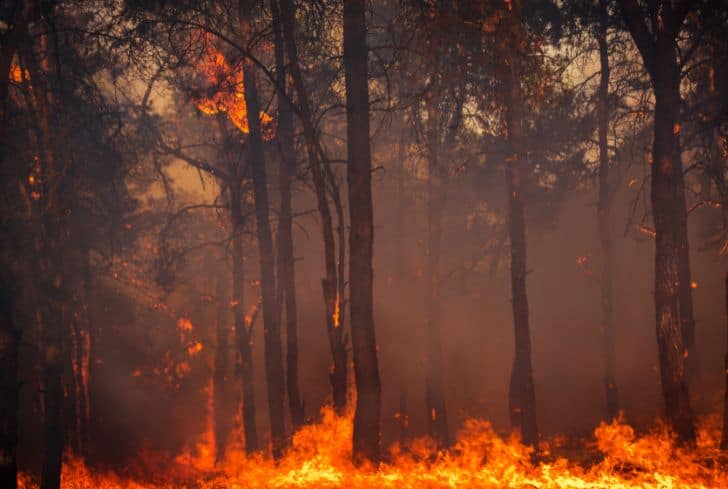
Additionally, wild animals and plants adapted to dry conditions may still suffer and die without adequate hydration, potentially leading to increased mortality and reduced reproduction. This is particularly concerning for at-risk species with already dwindling numbers.
4. Social conflicts and wars
In times of drought, water scarcity may eventually lead to inadequate food supplies, leading to competition and potentially fatal conflicts among individuals fighting for survival.
A case in point is the ongoing Syrian Civil War. It is believed to have started after millions of rural Syrians fled the drought-stricken rural areas for the cities, triggering unrest.
5. Migration and relocation
Faced with the other impacts of drought, many people and animals will flee a drought-stricken area in search of a new home with a better water supply and enough food.
6. Blackouts
Hydroelectricity remains the primary source of power for many people worldwide. However, droughts can impede hydroelectricity generation by decreasing the amount of water available in reservoirs. This diminishes the amount of power available to consumers.
7. Economic effects
Droughts frequently have a negative financial impact on families, businesses, governments, and individuals. Low yields lead to significant revenue loss, resulting in pay reductions and farm labor layoffs.
Also, since droughts mean that hydropower plants operate at a reduced capacity, it may skyrocket electricity bills for businesses and enterprises that rely on this energy source.
Effective Solutions to Drought
1. Harvesting rainwater
This is an easy solution to droughts and can be easily employed at home. With rainwater harvesting, homes can store the water they get from rain and then use it in dry conditions rather than exhausting present water bodies like rivers.
For a house with a primary water source, rainwater harvesting provides an auxiliary option for use when water is unavailable.
2. Planting more trees and combating deforestation
This is something that needs to be employed by everyone in the world. It is a piece of old-age advice but still applies today.

Planting more trees will improve the quality of the environment and increase the success of precipitation. It can reverse an area’s drought and arid conditions if the trees are maintained well until maturity.
Of course, for the afforestation initiative to work effectively, we should refrain from cutting the existing ones unless more are planted to replace them.
3. Switching to renewable energies
We have for centuries relied on non-renewable sources for our energy, like petroleum.
And while they’ve served as well, the extraction and use of these energies result in more greenhouse gases being pumped into the atmosphere, resulting in global warming and consequently droughts.
The alternative is to switch to renewable sources like wind and solar, which have little to no effect on the environment and will not result in droughts.
4. Solar pumps
Water is most commonly pumped out of the earth to irrigate crops or supply livestock with water. Most pumps do, however, generate electricity from fossil fuels; one of the largest culprits behind the current environmental crisis.
That’s where solar-powered pumps come in. Unlike their fuel-powered counterparts, solar pumps use solar energy to generate the power needed for the pumping.
Most governments seem to be at the forefront of campaigning for the transition, with some even providing subsidies to farmers so they may install them affordably.
5. Stricter government policies
These can be set at the local, national, regional, and international levels. Stringent laws must be implemented on those who use practices that can cause droughts or other environmentally damaging results. Doing this will stop climate change and solve the ongoing droughts.
6. Becoming environmentally conscious
It is essential to educate young individuals on the significance of safeguarding and enhancing the environment. This includes practicing recycling, reusing, and planting more trees.
Moreover, educational institutions, news media, and companies should emphasize the importance of environmental conservation, making it an individual responsibility to prevent droughts.
